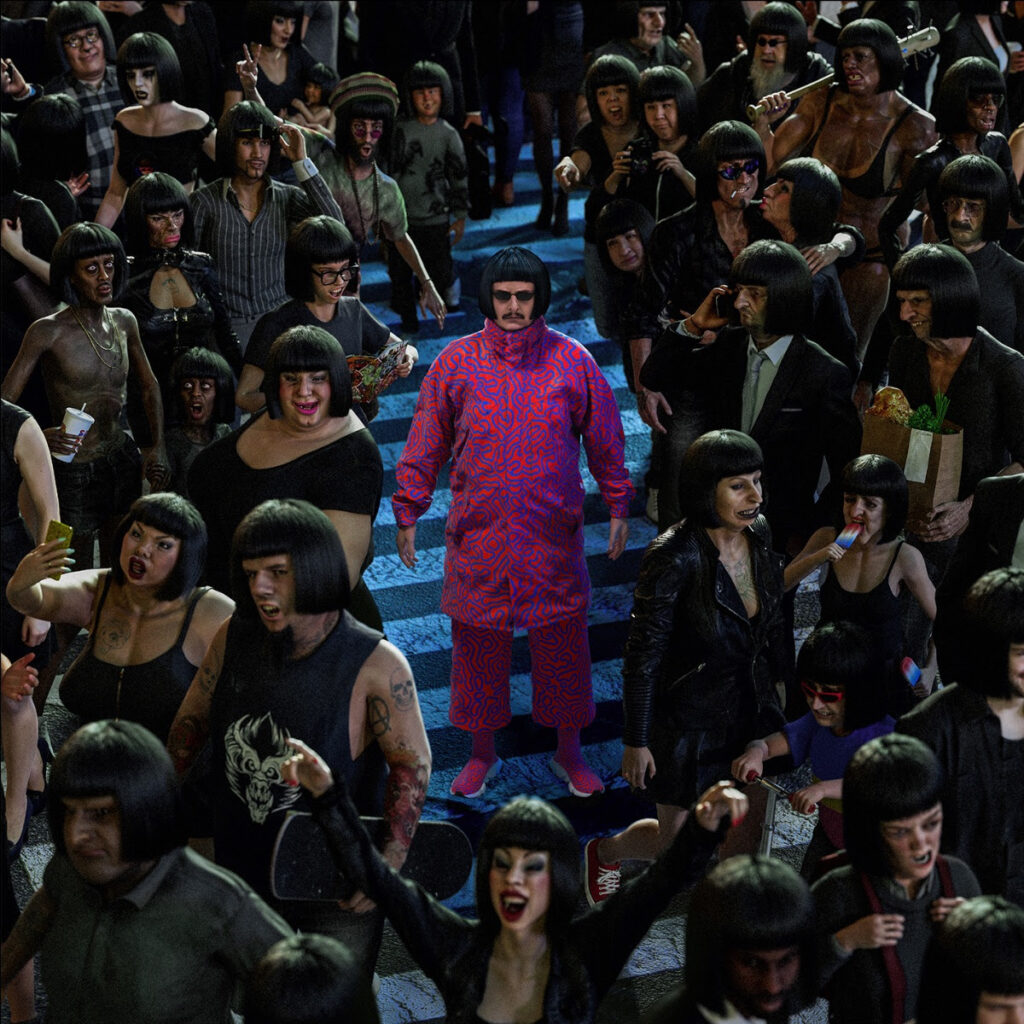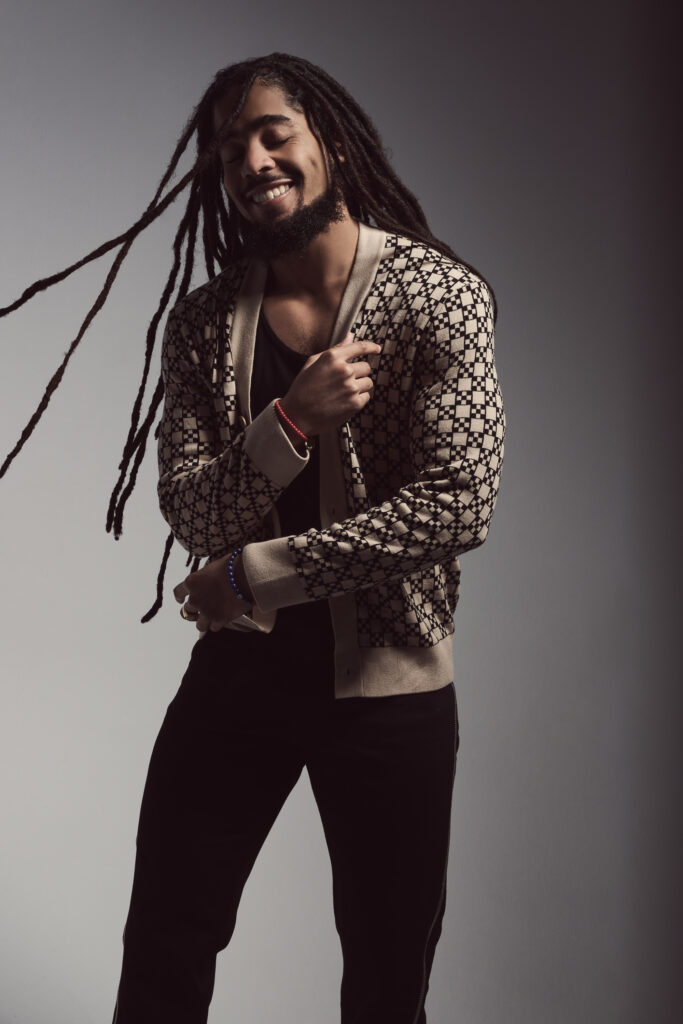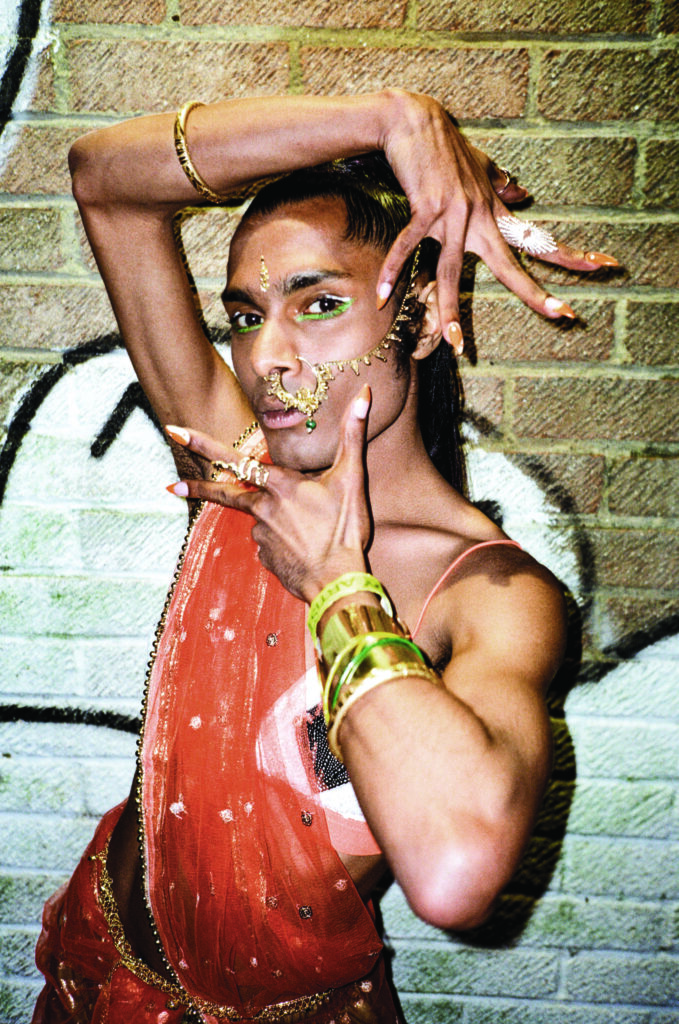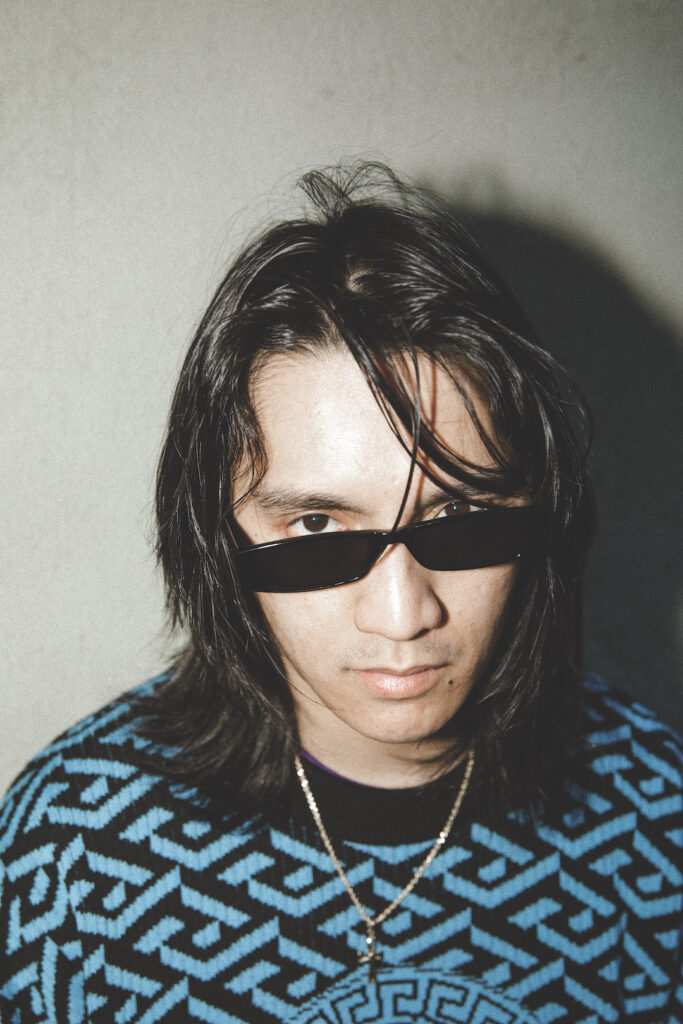Henri Alexander Levy Reveals Inspiration and Ethos for ENFANTS RICHES DÉPRIMÉS
Words by Karl Smith
Photography by Edwin J. Ortega
When people talk about fashion label ENFANTS RICHES DÉPRIMÉS, they mean differ- ent things. The brand has earned, cultivated and continued to build upon a dedicated cult following. That kind of dedication brings out a lot of much-deserved love in people. It also leads to a lot of assumptions. And when it comes to ERD, some of those are right, some are wrong, and most are only concerned with the end result, thereby missing the label’s inherent philosophy. It’s carefully considered and if you’re not looking close enough then you’re going to miss something worth seeing.
Speaking to artist, designer and label founder Henri Alexander Levy over a scratchy transatlantic video call might not be the best place for clarity, yet Levy speaks with a kind thoughtfulness to silence even some of his harshest, never mind disingenuous, critics. Much of the eyebrow raising that ERD elicits comes from its positioning as an “elitist punk” label. It’s deliberately exclusionary. As concepts, elite and punk are at complete odds with one another; they’re ideas that simply don’t mesh. Punk is at its core about community more than anything else. I put this to Levy from a different angle: it’s not that he has misunderstood the punk ethos, but rather that people have misunderstood his vision and in so doing, have missed the crux of the very punk ideals which they believe themselves to be defending. They miss that punk is welcoming but to its own community. It’s inclusive—like most other “elite” groups—but only to those who are deemed to belong. Niche communities are essentially formed via separation, isolation and difference. Exclusion breeds subculture.
“I’m into isolating objects,” Levy explains, lighting the first of what I count to be five cigarettes over the course of our call. “A lot of people make communal objects, objects that people can relate to in a broad sense: you know, you wear a hoodie and people are like, ‘oh, I like that, I’m going to wear that too because it speaks to me.’ Well, on the other end of that, I’m interested in making what I call ‘isolating objects.’ The Le Rosey shirt is a good example: it’s super specific, super niche and you only know about it if you know about it. So the object in itself isolates the majority of the population. I’m more into describing what I do in that way.”

As a way of thinking and creating, it makes sense. Not just in terms of ERD’s morose aesthetic—the name translates to “depressed rich kids”—but also with the less tangible philosophy behind the brand. No matter how warm and close a community might be on the inside, from the outside these groups are unappealing to the kinds of people who don’t align with their values in both moral and aesthetic terms. To be in, someone has to be out. And Levy isn’t always the one on the inside, either. “I kind of feel like we’ve isolated ourselves from the fashion community,” he tells me without a single hint of regret to suggest that he’d have it any other way.
There’s this thing going on now where you have all these brands, and people are always doing these wasteful collaborations. Creating without purpose. Whereas I feel like we really try to just stay in our own lane with what we’re doing. I try to stay as isolated as possible from what’s going on in that world. I want whatever I’m making to be in its truest form, you know? In terms of what I’m into, I keep that stuff really close to my heart. If I’m into something at a certain time—whether it’s music or writing or photography or whatever—then I’m not sharing it with a bunch of people. If I find a new little niche of something that I’m interested in, I make sure to keep it really close.”
His inspiration is deeply personal, almost private. And it’s with this semi-secrecy that Levy has carved his own subculture with its own signs and signifiers. Its codes obvious only to those in the know and meaningless to the rest of the world. He’s built a world on word-of-mouth mythology. Levy nods, exhaling smoke. “Right, exactly,” he confirms from somewhere inside the plume. “In making these kinds of isolating objects, we’ve created a sort of niche, outsider community. One that thrives on those little references. All the references I use are much more pinpoint: they’re very specific. The people that I really look up to and worship are all kind of forgotten in one way or another. Underdogs and thrown away artists.” He’s clearly in the mood to share so I tentatively as him if anyone comes to mind as a recent creative crush.
Right now, I’m really into these Cookie Mueller writings. She hung out with Nan Goldin in the 80s and she did a lot of writing that was just about the people she was hanging out with back then. But personally I’m really into these little books that she wrote; little short stories. I’m also super into Don Van Vliet, who was known as Captain Beefheart and then just retired to make abstract paintings. I suppose it’s these kinds of niche rarities that I’m always into, you know?
Does this huge breadth of influence really make its way into Levy’s work with ERD? Of course, but only in ways that feel right and look right, a kind of trickle-down effect whereby each thing is passed through Levy’s artistic lens and then refracted, creating something with all the composite parts of the original but with the appearance of something new. “I’ll pastiche and put them together,” he offers, nodding with cigarette once again in hand.
But for the last few years I’ve been really into, like, just kind of naive, psychotic, Art Brut, a kind of childlike work. I feel like in a way it’s super elegant. It hasn’t been overthought, you know, it still lives in the subconscious. I feel like I’m trying to access that place in the work, too. But it’s tricky: clothing has to look good, right? There are certain paths you can take with that graphically, or whatever, things you can do to challenge expectations, but I think there are still certain rules you kind of always have to play by in terms of things like making sure the silhouette looks good.

On the face of it, it seems like kind of a no-brainer: obviously, obviously clothes should look good. You’re supposed to wear them. On your body. Outside of the house. But, on the other hand, you only need to take the briefest of courtesy glances around the content mill of various hypedriven websites, scan the endless succession of daily drops to see that looking good isn’t necessarily an essential feature of what sells. For Levy, though, that simply does not wash. Although that still doesn’t necessarily equate to pandering to other people’s tastes.
The first thing, obviously, is the question of “would I wear this?”, or like, “would I want to see my girlfriend wearing this?” Certain things are more specific to a certain kind of character. And it may be that, actually, you’re not that character, you’re just a fan of that character and you’re kind of like inventing it as a part of yourself in your head. And so, a lot of times, we’ll see something—some- thing we’ve created—but we’ll be like, “man, I really liked this, but I’m just not sure. I’m not sure if I would wear it and I feel like kids would wear it wrong.” And, in those instances, if it doesn’t feel 100% right, we’re just not going to show it.
It’s a more mindful way of working that circles back to something we’ve touched upon briefly already. “I think that you have to have a certain element of restraint,” he begins, giving the impression of someone who might be choosing his words carefully because he wants to convey his thoughts as lucidly, honestly and succinctly as possible at what is now 10am in Los Angeles. “We live in this era where people are just putting out so much shit. And they’re doing it at such a high rate. They’re producing shit at an epic level. Every day, you know? But I always want to make sure that, comparatively, we’re showing that element of restraint. That we’re really making our decisions based on our own honest, personal preferences; that we’re always sure of everything before it leaves our studio.”
And it’s through this process that Levy also feels able to exert a certain level of control. “A really good piece will look good even on someone who’s not exactly wearing it right. More than that, though, it can sit in a closet for, like, 10 or 20 years and it will still feel cool. Even if you’re not putting it on, you like looking at it while it’s sitting there.” Still, though, there’s no way he can ever really have complete control over who buys the brand. If they can afford it and they decide that they like it, then they can find their way to own- ing it regardless of whether they’ve understood it.

Yeah, and I’ve seen a lot of kids who wear the clothes in cool ways that I’ve never really proposed or imagined for myself. In that way, it takes on a kind of a life of its own. The clothes reflect what they’re into and who they are and I always really enjoy seeing that. I think, as a creative, the more you make (and I’m not sure that this is true with everyone but it is for me) the more toned down [your own] personal style becomes because I’m just so involved in the work at that point, you know? I feel like I almost have to create an artistic uniform; something that’s almost thoughtless so that I can just show up and be ready to work. My day-to-day now is becoming very regimented in terms of having a schedule that I keep to, as opposed to when I was younger, when I would just stay up for days and be doing… whatever.
So the community he’s created with his work is feeding back into the work itself. ERD, as it was intended, goes on to absorb ERD in its free state. A kind of sartorial ouroboros which through its myriad possibilities of self-expression is not doomed to an eternity of repetition. Instead, it has the potential for constant regeneration and reinvention. Still, in the end it all comes back to Levy and his team, toiling in seclusion in their studio. It’s not the dark basement you might expect but a castle-like structure in LA formerly owned by Clark Gable. It’s their consistent themes, inflected rather than reshaped by shifting reference points, which define the brand.
With us, there’s always one solid, dark thread that’s holding everything together; everything kind of exists within that, and then you add to the world every time. Every time you do a new project, now these things exist in the world. That’s why I try to be pretty strict, and make sure that it’s something which is adding value, making things more intelligent and more insightful, and just making sure that it’s not a gimmick. It doesn’t matter what you’re chopping up, what you’re using as a reference. In the end, what’s left has to show who you are, not what you were looking at when you created it.
@henrialexanderlevy









































































































